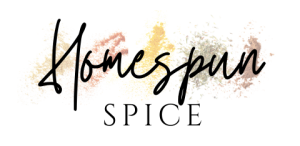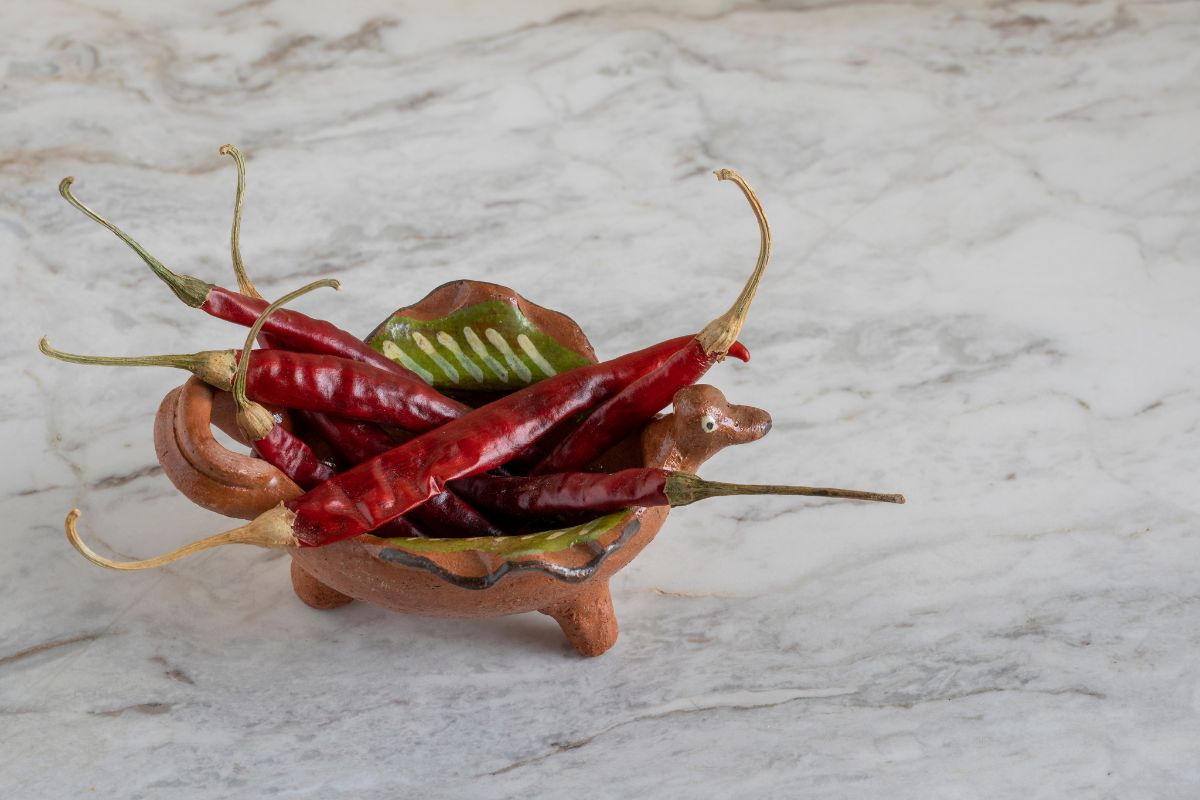Chile de arbol peppers, also known as rat’s tail chile or bird’s beak chile, are red chiles widely used in Mexican cuisine. Dried Chile de arbol peppers are well-loved for their spiciness and bright flavor. These dried peppers are common in chili powder, hot sauce, soups, and Mexican dishes.
Table of Contents
What are dried arbol chiles?
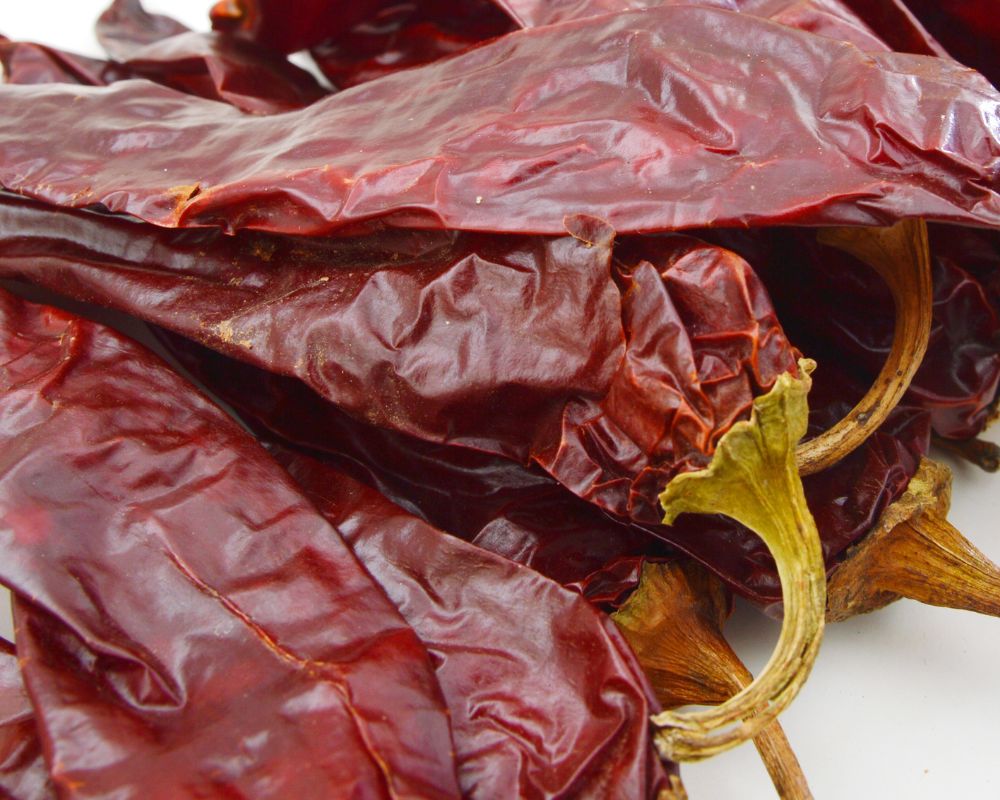
Chile de arbol peppers are small but potent Mexican chiles. They are the milder cousin of the cayenne pepper. While you can buy them fresh or in chili powder form, these dried chili peppers are commonly sold as whole dried peppers.
| Origin | The municipality of Yahualica in the Mexican state of Jalisco |
| Appearance | Slender, curved, 2 to 3 inches long, red chili peppers |
| Flavor profile | Spicy, grassy, earthy |
Origin
Chile de arbol peppers are grown in the municipality of Yahualica in the Mexican state of Jalisco. They have been cultivated in the region since ancient times and were first documented in the 16th century.
The Chile de arbol found their way into Southeast Asia, the United States, and the rest of the world through old trade expeditions of Spaniards.
Appearance
Chiles de Arbol, which translates to “tree chili” in Spanish, belongs to the species Capsicum annuum. They are slender, curved chili peppers that grow to about 2 to 3 inches long.
Also known as bird’s beak chile or pico de Pajaro, they are green when not ripe and turn red as they ripen. Dried Chile de arbol retains its red color, unlike other dried chilies that turn black or dark brown.
Flavor profile
Dried arbol chiles are pretty spicy. Beyond the heat punch, they inject smoky and nutty flavors into a dish with some grassy, earthy undertone. Aside from salsa and hot sauces, they go well with stews and soups.
When buying these dried arbol chilies, make sure you get those that are still pliable. If they are too brittle or cracked, those are signs that the flavors might be subdued.
Avoid damp or soft Chile de arbol, as it’s a sign that the Mexican peppers came in contact with a good amount of moisture.
Nutritional Benefits of arbol dried Chiles
Aside from its spiciness, Chile de arbol is known for its many health benefits. Like other chili peppers, it contains capsaicin, which may help lose weight and lower blood pressure.
The popular pepper also comes packed with vitamins A and C, contributing to better eyes, skin, and immune system. In addition, they also contain minerals such as iron and calcium that are good for your blood and bones.
What is the heat level of dried arbol chiles?
| Ancho pepper | 1,000 – 1,500 SHU |
| Guajillo chiles | 2,500 – 5,000 SHU |
| Arbol chiles | 15,000 – 30,000 SHU |
| Cayenne pepper | 30,000 – 50,000 SHU |
| Pequin chiles | 40,000 – 60,000 SHU |
Dried arbol chiles are quite spicy, typically classified as peppers that pop medium heat. They range between 15,000 and 30,000 Scoville Heat Units (SHU).
The Chile de arbol is milder than the cayenne pepper (30,000 to 50,000 SHU) and the pequin chiles (40,000 to 60,000 SHU).
However, it’s hotter than the ancho pepper and the guajillo chiles, which range between 1,000 to 1,500 SHU and 2,500 to 5,000 SHU on the Scoville Scale, respectively.
What is the difference between dried arbol chiles and fresh arbol chiles?
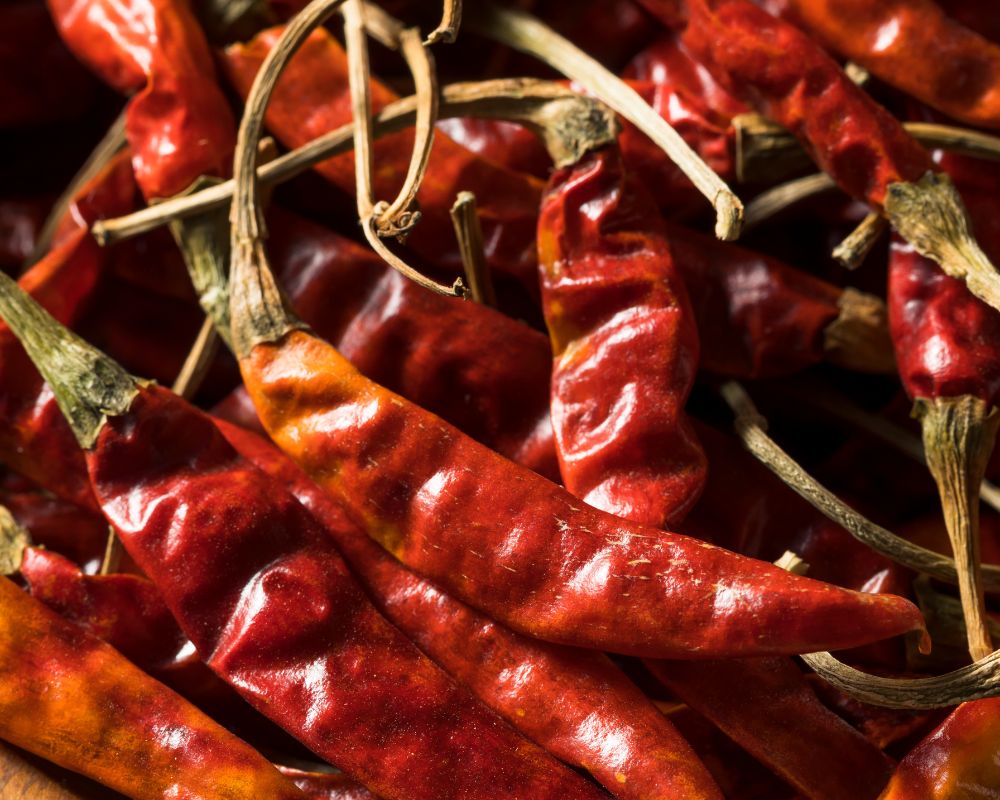
The primary difference between dried arbol chiles and fresh ones is their appearance. Dried arbol chiles are bright red to a dark cherry tint, often with a wrinkly and leathery texture.
Meanwhile, fresh rat’s tail peppers are green when unripe and red when fully ripe. While the flavor profile is similar, the dried peppers are hotter than the fresh chili peppers.
Arbol and Jalapeño peppers compared
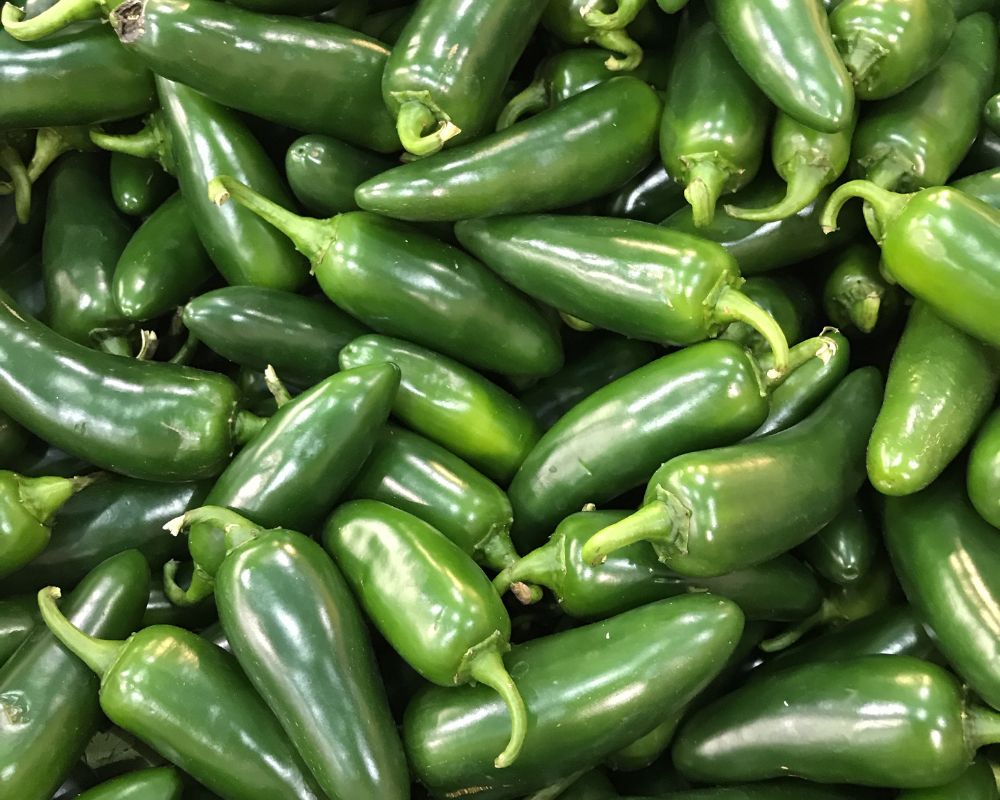
Just like arbol, jalapeño starts as green and ripens to red color. They are of similar length, but Chile de arbol peppers look more slender. However, there’s a big difference in the spiciness of the two popular red peppers.
The jalapeño peppers are milder than the Chile de arbol, registering at just 2,500 to 8,000 SHU on the Scoville Scale.
What are Arbol chiles used for?
You can use this dried hot pepper as other dried Mexican peppers. You can grind them or even turn them into a Chile powder.
For example, you can make Chile de arbol salsa by toasting the dried peppers and boiling them with garlic, onion, and tomatoes. Puree the mixture after and throw some cilantro into the blend.
What is the best way to store dried chile arbol peppers?
Store dried arbol chiles in a sealed container, preferably glass, to ensure you keep the moisture out. Place them in a pantry or cupboard that’s cool, dark, and away from direct sunlight.
Can I grow my own arbol chiles?
Arbol chiles can practically grow anywhere in warm weather and moist conditions. They can grow effortlessly between 75 to 80 days. Make sure your soil is rich in phosphorus and calcium.
